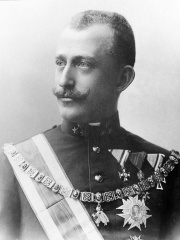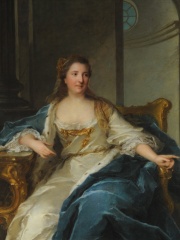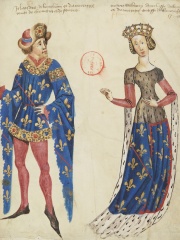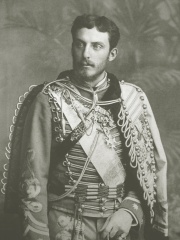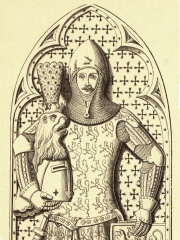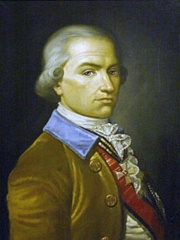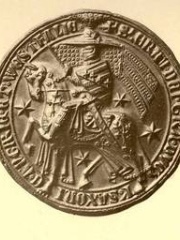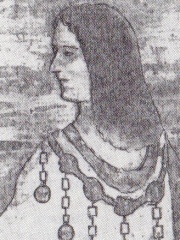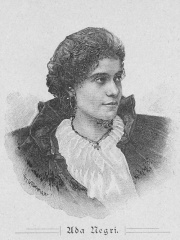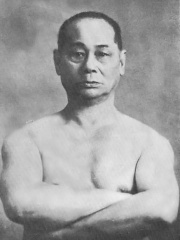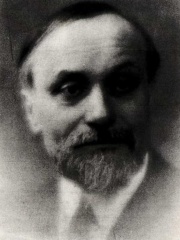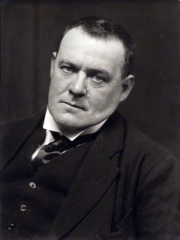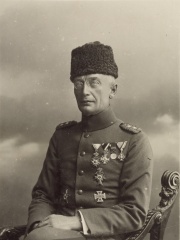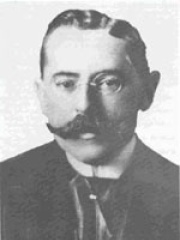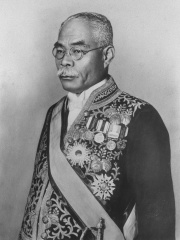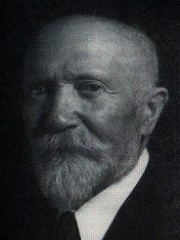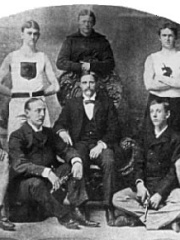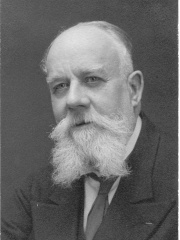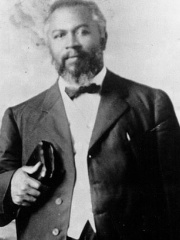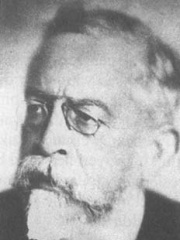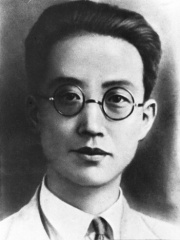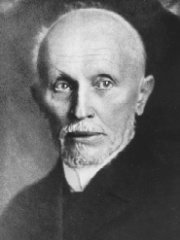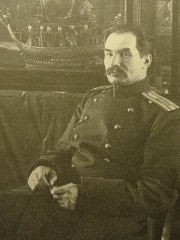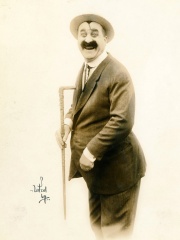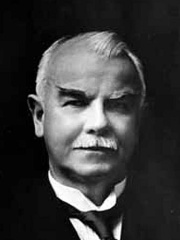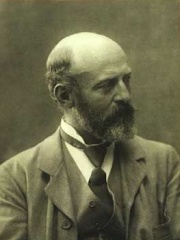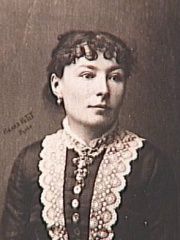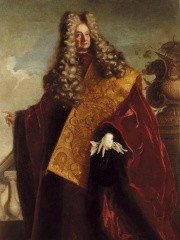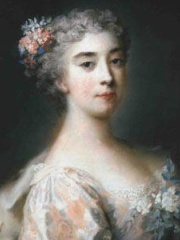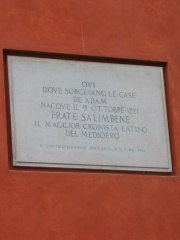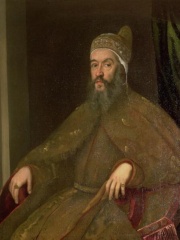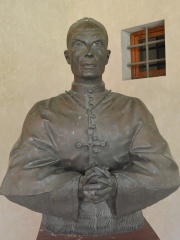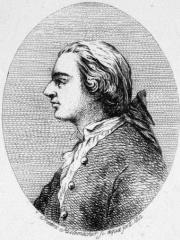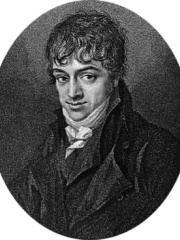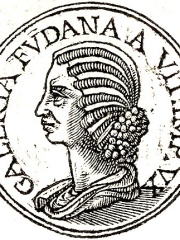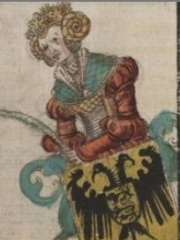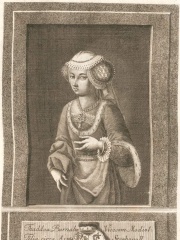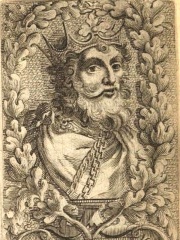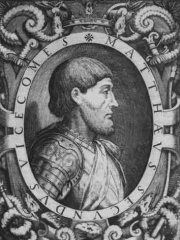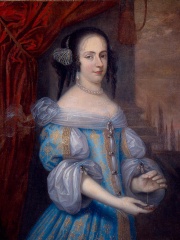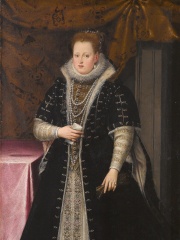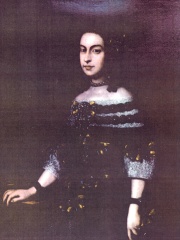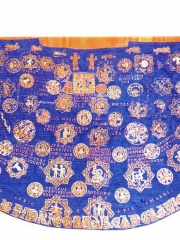NOBLEMAN
Princess Maria Theresa of Löwenstein-Wertheim-Rosenberg
1870 - 1935
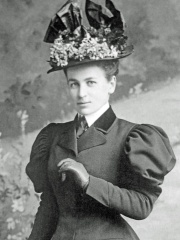
 Princess Maria Theresa of Löwenstein-Wertheim-Rosenberg
Princess Maria Theresa of Löwenstein-Wertheim-Rosenberg
Princess Maria Theresa of Löwenstein-Wertheim-Rosenberg (German: Maria Theresa, Prinzessin von Löwenstein-Wertheim-Rosenberg) (4 January 1870, Rome, Papal States – 17 January 1935, Vienna, Federal State of Austria) was a Princess of Löwenstein-Wertheim-Rosenberg and a member of the House of Löwenstein-Wertheim-Rosenberg by birth and an Infanta of Portugal, Duchess consort of Braganza, and titular queen consort of Portugal through her marriage to Miguel Januário, Duke of Braganza, Miguelist claimant to the throne of Portugal from 1866 to 1920. Read more on Wikipedia
Her biography is available in 16 different languages on Wikipedia. Princess Maria Theresa of Löwenstein-Wertheim-Rosenberg is the 888th most popular nobleman (down from 710th in 2024), the 2,677th most popular biography from Italy (down from 2,398th in 2019) and the 92nd most popular Italian Nobleman.
Memorability Metrics
Page views of Princess Maria Theresa of Löwenstein-Wertheim-Rosenberg by language
Among NOBLEMEN
Among noblemen, Princess Maria Theresa of Löwenstein-Wertheim-Rosenberg ranks 888 out of 1,415. Before her are Herman I, Count Palatine of Lotharingia, Archduke Leopold Ferdinand of Austria, Landgravine Caroline of Hesse-Rotenburg, Marie, Duchess of Auvergne, Muhammad VII of Granada, and Infante Antonio, Duke of Galliera. After her are Princess Sophia of Sweden, Günther von Schwarzburg, Peter August, Duke of Schleswig-Holstein-Sonderburg-Beck, Eric I, Duke of Saxe-Lauenburg, Henry the Mild, Duke of Brunswick-Lüneburg, and Countess Palatine Hedwig Elisabeth of Neuburg.
Most Popular Noblemen in Wikipedia
Go to all RankingsHerman I, Count Palatine of Lotharingia
900 - 996
HPI: 60.45
Rank: 882
Archduke Leopold Ferdinand of Austria
1868 - 1935
HPI: 60.45
Rank: 883
Landgravine Caroline of Hesse-Rotenburg
1714 - 1741
HPI: 60.44
Rank: 884
Marie, Duchess of Auvergne
1375 - 1434
HPI: 60.44
Rank: 885
Muhammad VII of Granada
1370 - 1408
HPI: 60.43
Rank: 886
Infante Antonio, Duke of Galliera
1866 - 1930
HPI: 60.43
Rank: 887
Princess Maria Theresa of Löwenstein-Wertheim-Rosenberg
1870 - 1935
HPI: 60.43
Rank: 888
Princess Sophia of Sweden
1547 - 1611
HPI: 60.41
Rank: 889
Günther von Schwarzburg
1304 - 1349
HPI: 60.40
Rank: 890
Peter August, Duke of Schleswig-Holstein-Sonderburg-Beck
1697 - 1775
HPI: 60.40
Rank: 891
Eric I, Duke of Saxe-Lauenburg
1280 - 1359
HPI: 60.39
Rank: 892
Henry the Mild, Duke of Brunswick-Lüneburg
1355 - 1416
HPI: 60.39
Rank: 893
Countess Palatine Hedwig Elisabeth of Neuburg
1673 - 1722
HPI: 60.39
Rank: 894
Contemporaries
Among people born in 1870, Princess Maria Theresa of Löwenstein-Wertheim-Rosenberg ranks 90. Before her are Erskine Childers, Ada Negri, Motobu Chōki, Charles Tournemire, Hilaire Belloc, and Friedrich Freiherr Kress von Kressenstein. After her are Francisco S. Carvajal, Osachi Hamaguchi, Nikolay Lossky, John Paine, Édouard Le Roy, and William J. Seymour. Among people deceased in 1935, Princess Maria Theresa of Löwenstein-Wertheim-Rosenberg ranks 79. Before her are Yusuf Akçura, Qu Qiubai, Photius II of Constantinople, Johannes Thiele, Archduke Leopold Ferdinand of Austria, and Pyotr Kozlov. After her are Mack Swain, Alfred Ewing, Erich von Hornbostel, Viggo Johansen, Zequinha de Abreu, and Virginie Demont-Breton.
Others Born in 1870
Go to all RankingsErskine Childers
POLITICIAN
1870 - 1922
HPI: 61.07
Rank: 84
Ada Negri
WRITER
1870 - 1945
HPI: 60.90
Rank: 85
Motobu Chōki
MARTIAL ARTS
1870 - 1944
HPI: 60.84
Rank: 86
Charles Tournemire
COMPOSER
1870 - 1939
HPI: 60.74
Rank: 87
Hilaire Belloc
WRITER
1870 - 1953
HPI: 60.69
Rank: 88
Friedrich Freiherr Kress von Kressenstein
MILITARY PERSONNEL
1870 - 1948
HPI: 60.65
Rank: 89
Princess Maria Theresa of Löwenstein-Wertheim-Rosenberg
NOBLEMAN
1870 - 1935
HPI: 60.43
Rank: 90
Francisco S. Carvajal
POLITICIAN
1870 - 1932
HPI: 60.28
Rank: 91
Osachi Hamaguchi
POLITICIAN
1870 - 1931
HPI: 60.12
Rank: 92
Nikolay Lossky
PHILOSOPHER
1870 - 1965
HPI: 59.89
Rank: 93
John Paine
ATHLETE
1870 - 1951
HPI: 59.80
Rank: 94
Édouard Le Roy
PHILOSOPHER
1870 - 1954
HPI: 59.80
Rank: 95
William J. Seymour
RELIGIOUS FIGURE
1870 - 1922
HPI: 59.79
Rank: 96
Others Deceased in 1935
Go to all RankingsYusuf Akçura
POLITICIAN
1876 - 1935
HPI: 60.61
Rank: 73
Qu Qiubai
POLITICIAN
1899 - 1935
HPI: 60.60
Rank: 74
Photius II of Constantinople
RELIGIOUS FIGURE
1874 - 1935
HPI: 60.59
Rank: 75
Johannes Thiele
BIOLOGIST
1860 - 1935
HPI: 60.48
Rank: 76
Archduke Leopold Ferdinand of Austria
NOBLEMAN
1868 - 1935
HPI: 60.45
Rank: 77
Pyotr Kozlov
EXPLORER
1862 - 1935
HPI: 60.43
Rank: 78
Princess Maria Theresa of Löwenstein-Wertheim-Rosenberg
NOBLEMAN
1870 - 1935
HPI: 60.43
Rank: 79
Mack Swain
ACTOR
1876 - 1935
HPI: 60.31
Rank: 80
Alfred Ewing
PHYSICIST
1855 - 1935
HPI: 60.23
Rank: 81
Erich von Hornbostel
POLITICIAN
1877 - 1935
HPI: 60.15
Rank: 82
Viggo Johansen
PAINTER
1851 - 1935
HPI: 59.91
Rank: 83
Zequinha de Abreu
MUSICIAN
1880 - 1935
HPI: 59.91
Rank: 84
Virginie Demont-Breton
PAINTER
1859 - 1935
HPI: 59.86
Rank: 85
In Italy
Among people born in Italy, Princess Maria Theresa of Löwenstein-Wertheim-Rosenberg ranks 2,677 out of 5,161. Before her are Guido Marini (1965), Appius Claudius Pulcher (-250), Carlo Ruzzini (1653), Enrichetta d'Este (1702), Salimbene di Adam (1221), and Taddeo di Bartolo (1362). After her are Alvise I Mocenigo (1507), Elia Dalla Costa (1872), Thrasybulus of Syracuse (-500), Gaetano Pugnani (1731), Félix Fénéon (1861), and Giuseppe Acerbi (1773).
Others born in Italy
Go to all RankingsGuido Marini
RELIGIOUS FIGURE
1965 - Present
HPI: 60.46
Rank: 2,671
Appius Claudius Pulcher
POLITICIAN
250 BC - 211 BC
HPI: 60.46
Rank: 2,672
Carlo Ruzzini
POLITICIAN
1653 - 1735
HPI: 60.45
Rank: 2,673
Enrichetta d'Este
POLITICIAN
1702 - 1777
HPI: 60.44
Rank: 2,674
Salimbene di Adam
WRITER
1221 - Present
HPI: 60.44
Rank: 2,675
Taddeo di Bartolo
PAINTER
1362 - 1422
HPI: 60.43
Rank: 2,676
Princess Maria Theresa of Löwenstein-Wertheim-Rosenberg
NOBLEMAN
1870 - 1935
HPI: 60.43
Rank: 2,677
Alvise I Mocenigo
POLITICIAN
1507 - 1577
HPI: 60.43
Rank: 2,678
Elia Dalla Costa
RELIGIOUS FIGURE
1872 - 1961
HPI: 60.42
Rank: 2,679
Thrasybulus of Syracuse
POLITICIAN
500 BC - 460 BC
HPI: 60.41
Rank: 2,680
Gaetano Pugnani
COMPOSER
1731 - 1798
HPI: 60.41
Rank: 2,681
Félix Fénéon
WRITER
1861 - 1944
HPI: 60.41
Rank: 2,682
Giuseppe Acerbi
BIOLOGIST
1773 - 1846
HPI: 60.40
Rank: 2,683
Among NOBLEMEN In Italy
Among noblemen born in Italy, Princess Maria Theresa of Löwenstein-Wertheim-Rosenberg ranks 92. Before her are Galeria Fundana (null), Margaret of Sicily (1237), Taddea Visconti (1351), Adalbert I of Ivrea (880), Matteo II Visconti (1319), and Isabella d'Este, Duchess of Parma (1635). After her are Margherita Gonzaga, Duchess of Ferrara (1564), Lucrezia Barberini (1628), Melus of Bari (1000), Beatrice of Sicily, Latin Empress (1252), Vespasiano I Gonzaga (1531), and Guy, Margrave of Tuscany (900).
Galeria Fundana
HPI: 61.18
Rank: 86
Margaret of Sicily
1237 - 1270
HPI: 61.11
Rank: 87
Taddea Visconti
1351 - 1381
HPI: 61.07
Rank: 88
Adalbert I of Ivrea
880 - 929
HPI: 60.88
Rank: 89
Matteo II Visconti
1319 - 1355
HPI: 60.62
Rank: 90
Isabella d'Este, Duchess of Parma
1635 - 1666
HPI: 60.62
Rank: 91
Princess Maria Theresa of Löwenstein-Wertheim-Rosenberg
1870 - 1935
HPI: 60.43
Rank: 92
Margherita Gonzaga, Duchess of Ferrara
1564 - 1618
HPI: 60.39
Rank: 93
Lucrezia Barberini
1628 - 1699
HPI: 60.04
Rank: 94
Melus of Bari
1000 - 1020
HPI: 60.00
Rank: 95
Beatrice of Sicily, Latin Empress
1252 - 1275
HPI: 60.00
Rank: 96
Vespasiano I Gonzaga
1531 - 1591
HPI: 59.95
Rank: 97
Guy, Margrave of Tuscany
900 - 930
HPI: 59.89
Rank: 98

